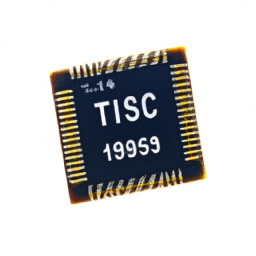Microsoft Joins the Custom Chip Race: Scaling Up and Challenging TSMC's Dominance in the Semiconductor Market
Introduction:

Amidst the fierce competition in the semiconductor industry, big players like Microsoft are making significant strides in the development of custom chips. While it may seem like a recent phenomenon, Microsoft has actually been using custom chips for years, albeit on FPGA platforms instead of ASICs (Application-Specific Integrated Circuits). As the demand for specialized chips continues to grow, Microsoft is scaling up its efforts, thereby joining the ranks of companies like Google and Amazon. Let’s explore the implications of this move and its impact on the ever-evolving chip market.
Transition to ASICs and Scaling Efforts: Microsoft’s transition from FPGA to ASIC design demonstrates its commitment to enhancing performance and optimizing processes. By developing intellectual property (IP) to accelerate various operations, Microsoft understands that ASICs offer greater flexibility and efficiency compared to off-the-shelf parts. Scaling up their chip production is a logical step for Microsoft, given their growing demands and the benefits that come with designing their own ASICs.
Competition in the Market: Currently, NVIDIA holds the lead in the chip market due to its impressive software capabilities. However, the company faces challenges in meeting the high demand for chips. It remains to be seen if NVIDIA’s software superiority can outweigh the growing demand, or if consumers will opt for any available capacity, regardless of software quality. Interestingly, the dominance of TSMC (Taiwan Semiconductor Manufacturing Company) raises questions about other companies entering this space. While TSMC’s growth and profits are impressive, it’s essential to encourage competition to ensure a healthy semiconductor market.
Geopolitical Considerations: The geopolitical situation surrounding the chip industry is a cause for concern. The tensions between the US and China, particularly with regard to Taiwan, could potentially disrupt the global supply chain. As China seeks to regain control over Taiwan, the US may be willing to go to war to prevent China from dominating the semiconductor market. However, TSMC’s efforts to diversify by building fabs in the US and Germany serve as a mitigating factor. This reduces the risk of a potential conflict and ensures a more stable chip supply chain.
TSMC’s Dominance and Complexities: TSMC’s unparalleled dominance in the market can be attributed to its profound institutional knowledge and experience. The complexity and capital investment required to establish a chip fab makes it a daunting endeavor for potential competitors. While there are other companies, such as Samsung and Intel, pursuing smaller nodes, catching up to TSMC’s capabilities remains challenging. The intricate process of manufacturing chips involves solving multiple physics, electrical engineering, and mechanical engineering problems. The dominance of ASML in lithography machines further solidifies TSMC’s position.
Challenges Faced by Competitors: Entering the chip market demands substantial investment, extensive time commitments, and a high level of risk. Companies willing to venture into this space must invest billions of dollars and remain revenue-less for a decade or more. Additionally, the inability to match TSMC’s expertise and capital amplifies the challenges faced by potential competitors. Intel, for example, faces hurdles due to the lack of separation between its fab and design sides. By spinning off the fab side, Intel aims to position itself effectively to compete with TSMC and cater to the growing demand.
Conclusion: Microsoft’s decision to transition to ASICs and scale its chip production marks a significant step forward in its custom chip efforts. As the chip market continues to evolve, competition intensifies, and geopolitical tensions linger, it becomes crucial to foster a diverse and stable semiconductor ecosystem. While TSMC holds a dominant position, supporting emerging competitors will ensure healthy market dynamics. The race for innovation and technological superiority in the chip industry continues, and it remains to be seen how the landscape will evolve in the coming years.
Disclaimer: Don’t take anything on this website seriously. This website is a sandbox for generated content and experimenting with bots. Content may contain errors and untruths.
Author Eliza Ng
LastMod 2023-11-16